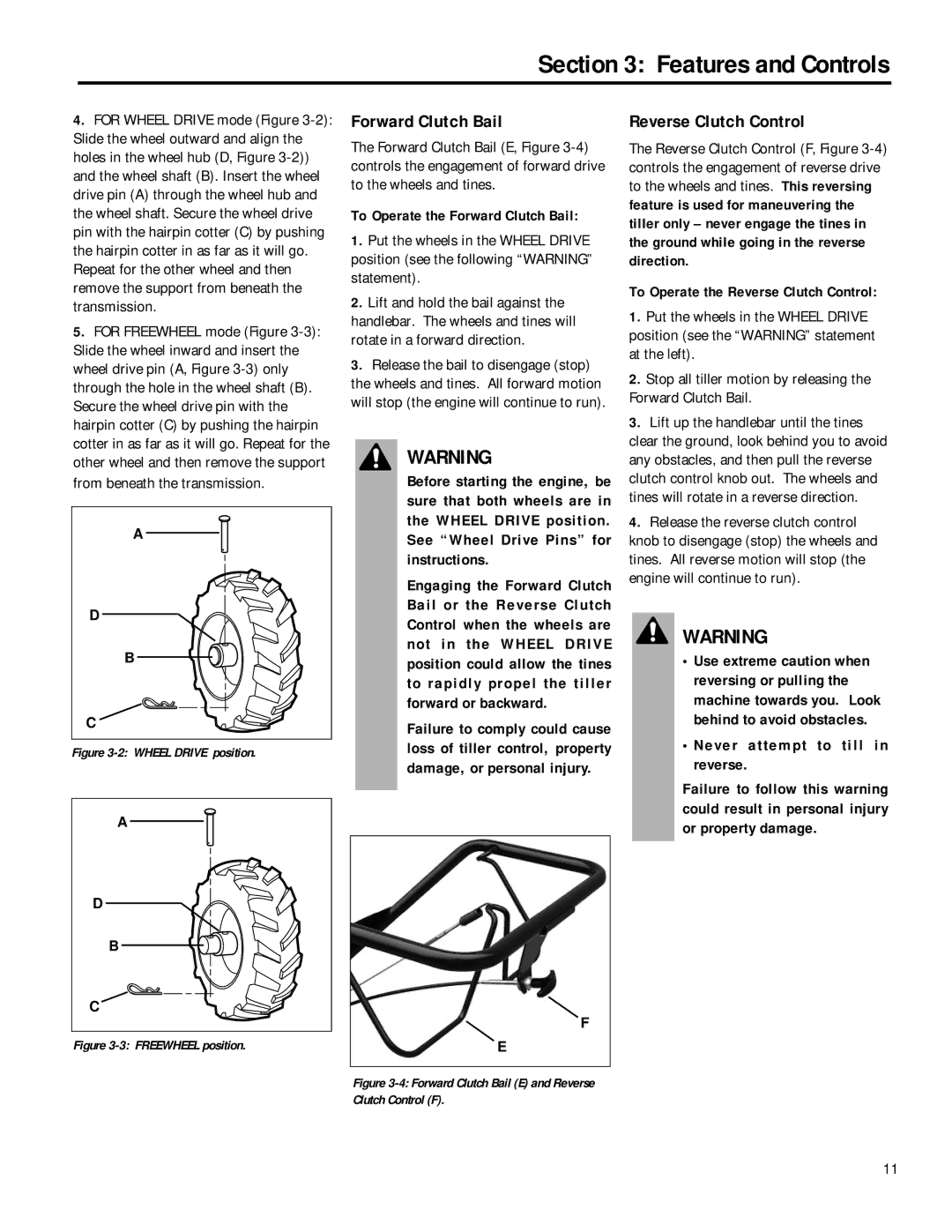
Section 3: Features and Controls
4.FOR WHEEL DRIVE mode (Figure
5.FOR FREEWHEEL mode (Figure
A |
D |
B |
C |
Figure 3-2: WHEEL DRIVE position.
A |
D |
B |
C |
Forward Clutch Bail
The Forward Clutch Bail (E, Figure
To Operate the Forward Clutch Bail:
1.Put the wheels in the WHEEL DRIVE position (see the following “WARNING” statement).
2.Lift and hold the bail against the handlebar. The wheels and tines will rotate in a forward direction.
3.Release the bail to disengage (stop) the wheels and tines. All forward motion will stop (the engine will continue to run).
WARNING
Before starting the engine, be sure that both wheels are in the WHEEL DRIVE position. See “Wheel Drive Pins” for instructions.
Engaging the Forward Clutch Bail or the Reverse Clutch Control when the wheels are not in the WHEEL DRIVE position could allow the tines to rapidly propel the tiller forward or backward.
Failure to comply could cause loss of tiller control, property damage, or personal injury.
Reverse Clutch Control
The Reverse Clutch Control (F, Figure
To Operate the Reverse Clutch Control:
1.Put the wheels in the WHEEL DRIVE position (see the “WARNING” statement at the left).
2.Stop all tiller motion by releasing the Forward Clutch Bail.
3.Lift up the handlebar until the tines clear the ground, look behind you to avoid any obstacles, and then pull the reverse clutch control knob out. The wheels and tines will rotate in a reverse direction.
4.Release the reverse clutch control
knob to disengage (stop) the wheels and tines. All reverse motion will stop (the engine will continue to run).
WARNING
•Use extreme caution when reversing or pulling the machine towards you. Look behind to avoid obstacles.
•Never attempt to till in reverse.
Failure to follow this warning could result in personal injury or property damage.
Figure 3-3: FREEWHEEL position.
F
E
Figure 3-4: Forward Clutch Bail (E) and Reverse Clutch Control (F).
11
